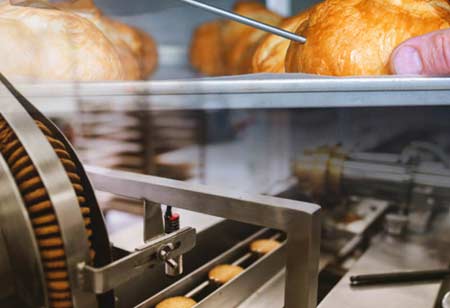Thank you for Subscribing to Food Business Review Weekly Brief
Top 3 Automation Questions Facing the Food Industry
The present health pandemic and the crisis have added a mountain of challenges across the food and beverage industry.

By
Food Business Review | Thursday, July 15, 2021
Stay ahead of the industry with exclusive feature stories on the top companies, expert insights and the latest news delivered straight to your inbox. Subscribe today.

Automation could fix many of the food industry's issues, but numerous implementation challenges can be looked at and upgraded.
FREMONT, CA: The present health pandemic and the crisis have added a mountain of challenges across the food and beverage industry. Customer buying patterns vary, and both production of goods and other business operations have been drastically jumbled. As a result, food companies are pressed to improve and demonstrate how to deploy automation practices to innovate their processes to create an efficient supply chain and productivity. Automation offers endless opportunities for manufacturers today. But the execution of automation involves several challenges.
Here is more about the main challenges involved.
• Food Safety and Traceability
Unsurprisingly food safety and traceability are top in the list of automation challenges that face food manufacturers. Food manufacturers have a responsibility to ensure that food is safe for people to eat, and thus the potential of automation to assure traceability is vital. Through discussions with respondents, stricter conformability and complexity challenges assure full traceability through existing food production systems. However, tracking products through all stages of sourcing, processing, and distribution with the complex nature of supply chains is no easy feat.
• Packaging
Packaging is the second most prominent challenge that food manufacturers face. Packaging has always changed, but in recent years witnessed a boom in healthy eating, and manufacturers have been under ever-growing pressure to ensure that food packaging appeals to customers. This dynamic consumer landscape has uplifted issues in the flexibility of automated packaging systems to react to change. In addition, the rising number of packaging changes has peeked the wrong product's risk of being placed in the wrong packaging. Incorrect packaging could have grave consequences.
• Cost of Implementation
Finally, the predictable problem in automation adoption is cost. The beginning cost of implementing automated solutions is high, but legacy systems have always lacked flexibility. The flexibility of the systems is major in allowing soft reconfiguration to accommodate evolving consumer tastes; attempts at previously gaining automation have often missed these vital components resulting in costly white elephants. Combined with the cost of robotics and automation dropping because of strong adoption, They believed they could overcome the challenge of implementing automation.






